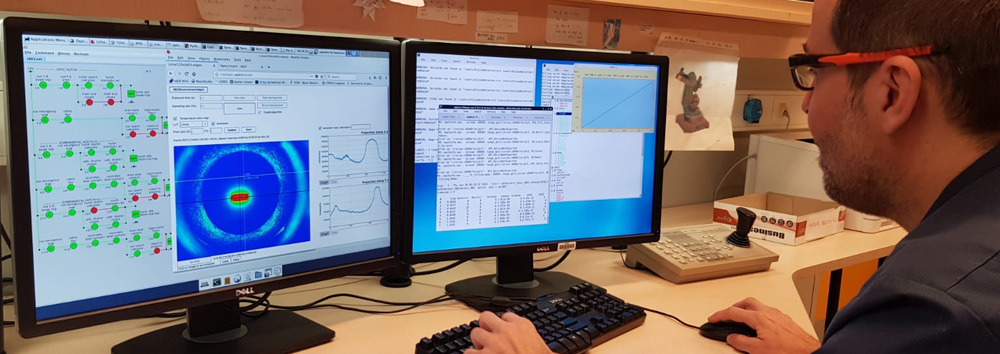On 30 January 2020, after reaching in the last two days stable operation conditions of the EBS storage ring at 100 mA injection current, 65% injection efficiency and stable and rapid vacuum conditioning, 26 out of 27 Insertion Device beamlines opened their front-end with 5 mA stored electron beam current.
The EBS X-ray beam – on all these beamlines, at distances from the source varying from 45 to 160 m, depending on the specific beamline – was found within fractions of millimetres from its position as measured in December 2018 before the start of the shutdown.
“The beam shape is extremely good and almost cylindrical as expected, with sub-millimetre size at 100 m from the source! X-rays are shining again in the ESRF Experimental Hall!”,says Francesco Sette, Director General.
“This has never been seen before”, said Harald Reichert, Director of Research. “We’ve taken out a 1km long machine, we have put a new one in and we have 5km of beamlines to align. And it is working straight away, it is pretty amazing”, he adds.
“This shows how the teams have worked in tune with each other to accomplish a real feat, especially we are very grateful to the alignment group for a perfect job”, adds Jean Susini, Director of Research.
About ESRF
The ESRF is the world-leading source of synchrotron and a centre of excellence for fundamental and innovation-driven research for imaging and studying the structure of matter at the atomic and nanometric scale in all fields of research. Located in Grenoble, the ESRF owes its success to the international co-operation of 22 partner nations, of which 13 are Members and 9 are Scientific Associates. Following on from 20 years of success and scientific excellence, the ESRF launched the ESRF-EBS -Extremely Brilliant Source- project (150M€ over 2015-2022). Centred on rebuilding the ESRF storage ring, EBS will deliver unprecedented source brilliance and coherence (~100x), offering scientists with a powerful new instrument to look even deeper into the structure of materials and living matter. EBS also includes the construction of new state-of-the-art beamlines, a scientific instrumentation programme with ambitious detector projects and a data management and analysis strategy.



